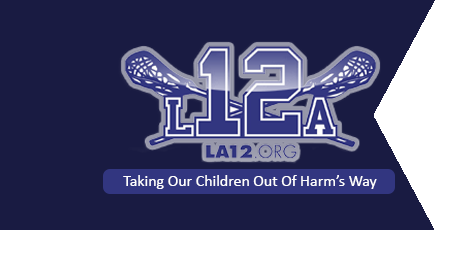Parents credit optional athletic heart screening for saving son’s life
DHHS Boy’s Lacrosse May Just Save Your Life
January 3, 2012January 24, 2012
Mary Garrigan Journal staff | Posted: Saturday, January 7, 2012 6:00 am
It was the best $60 that Scott and Sarah Lepke ever spent.
In November 2010, the Lepkes opted to pay the extra money for an optional athletic heart screening for their son, Matt. The ultrasound test, through Transmed Inc.’s Screening America program, was offered by the Beresford School Di strict. The Lepkes’ decision was more about supporting the sports program at the school, where Scott was the high school principal at the time, than it was about any concern for their son’s health.
“We never, ever thought that there was a problem with him. He’d been an athlete his whole life,” said Sarah of her 12-year-old son.
But the ultrasound revealed a life-threatening defect in Matt’s heart – a large hole between his left and right atrium that had been there since birth. So large, in fact, that it went undetected during routine physicals that might have caught smaller, noisier heart murmurs.
“That’s the thing with murmurs – the bigger they are, the less likely you are to catch them,” said Scott, who has been superintendent of the Custer School District since July. “His was so big, that it wasn’t making a noise.”
But a routine echocardiogram performed by an ultrasound technician at the Beresford school revealed Matt’s severely enlarged heart. About two weeks later, the family received a letter advising them against any athletic activity until Matt could be evaluated by a cardiologist. The report propelled the Lepkes into a medical crisis that ended in open-heart surgery at a University of Minnesota hospital one year ago this month.
His parents credit the heart screening with saving their son’s life, not to mention his basketball career.
Today, Matt is a healthy, happy eighth-grader in Custer who lettered in soccer this fall and is playing middle school basketball this winter. He was a baseball standout in Beresford last summer and ran track in the spring.
“Eight weeks after his heart surgery, he was playing in a basketball tournament,” said his dad, even if he had to wear a special chest protector over his still-healing surgical scar.
Matt is thrilled to be back on the hardwood in Custer this season, and he’s hopeful that his basketball career will include some time under the tutelage of Custer coaching legend Larry Luitjens. “Yeah, I really want to play for Larry Luitjens,” Matt said.
The Lepkes, who joke that they are living their athletic dreams through their only child, say Matt was “raised in gyms” as his father’s teaching and coaching career took him from Wayne, Neb., to Chamberlain, Yankton, Milbank and Beresford before the family moved to Custer in July. They hope Custer is their last move.
“We’v e been all over. We love it here,” Scott said.
And as superintendent, Scott hopes to make heart screenings available to all Custer school athletes, regardless of their ability to pay.
The optional screenings cost $79. Scott is exploring the possibility of creating a foundation that would be funded by professional athletes with a connection to South Dakota, people who “would like to give back” to kids in their home state.
“I can’t stress how important it is,” said Scott. “I personally would like to see it done on every kid. Matt went to all his sports physicals and no doctor was going to pick up on this. So I’ve been trying to tell this story as much as I can. I talk to superintendents and athletic directors all over the state.”
The screenings offer peace of mind to all parents, but for “that one kid” whose heart defect is discovered, it is “everything,” he said.
Over the years, Matt’s body had compensated so well for his overworked heart that there was no outward sign that he was sick.
Once cardiologists diagnosed his heart p roblem, they also discovered that his liver and spleen had become enlarged, too.
“He never, ever looked like a kid who needed heart surgery,” his dad said.
But he did.
“The whole right side of his heart was enlarged,” said Sarah, a registered nurse, who knew that Matt’s heart tissue had stretched to accommodate the blood that it could no pump effectively. “As a nurse, I knew way more than I needed to know.”
Today, the only sign of Matt’s successful surgery is a long scar down the middle of his chest.
Even before the six-hour operation was over, his heart had returned to its normal size.
Although rare, hypertrophic cardiomyopathy – commonly defined as an enlarged heart – causes the sudden cardiac death of 3,000 or more young people annually, said Ne’Cole Werdel, a cardiac ultrasound sonographer for Transmed, Inc. Among those are high-profile athletes like NBA basketball star Hank Gathers, who died in 1990, and all-star pitcher Darryl Kile, who died in 2002.
< p class=”MsoNormal”>Recently, a star basketball player from Michigan shot his team’s winning points before collapsing and dying from an enlarged heart. And during a Rapid City Stevens High School football practice in 2008, Ryan Gramberg, 16, collapsed and died of an enlarged heart.
Preventing sudden cardiac death in young athletes like Ryan or Matt – typically people ages 12 to 34 – is Screening America’s mission, said Werdel. The company has offices in Sioux Falls and Watertown and offers screenings in schools statewide.
Custer hosted a screening for about 17 student athletes in October, and other area schools, including Lead/Deadwood and Newell, have of fered the screenings. Another is scheduled for Jan. 23 in Spearfish.
For now, Matt is focused on his first basketball game on Jan. 19, but his longer-term career plans always included becoming a doctor, even before his own health problems.
In light of his medical history, he says he has already picked a specialty: cardiology.
Contact Mary Garrigan at 394-8424 or mary.garrigan@rapidcityjournal.com

